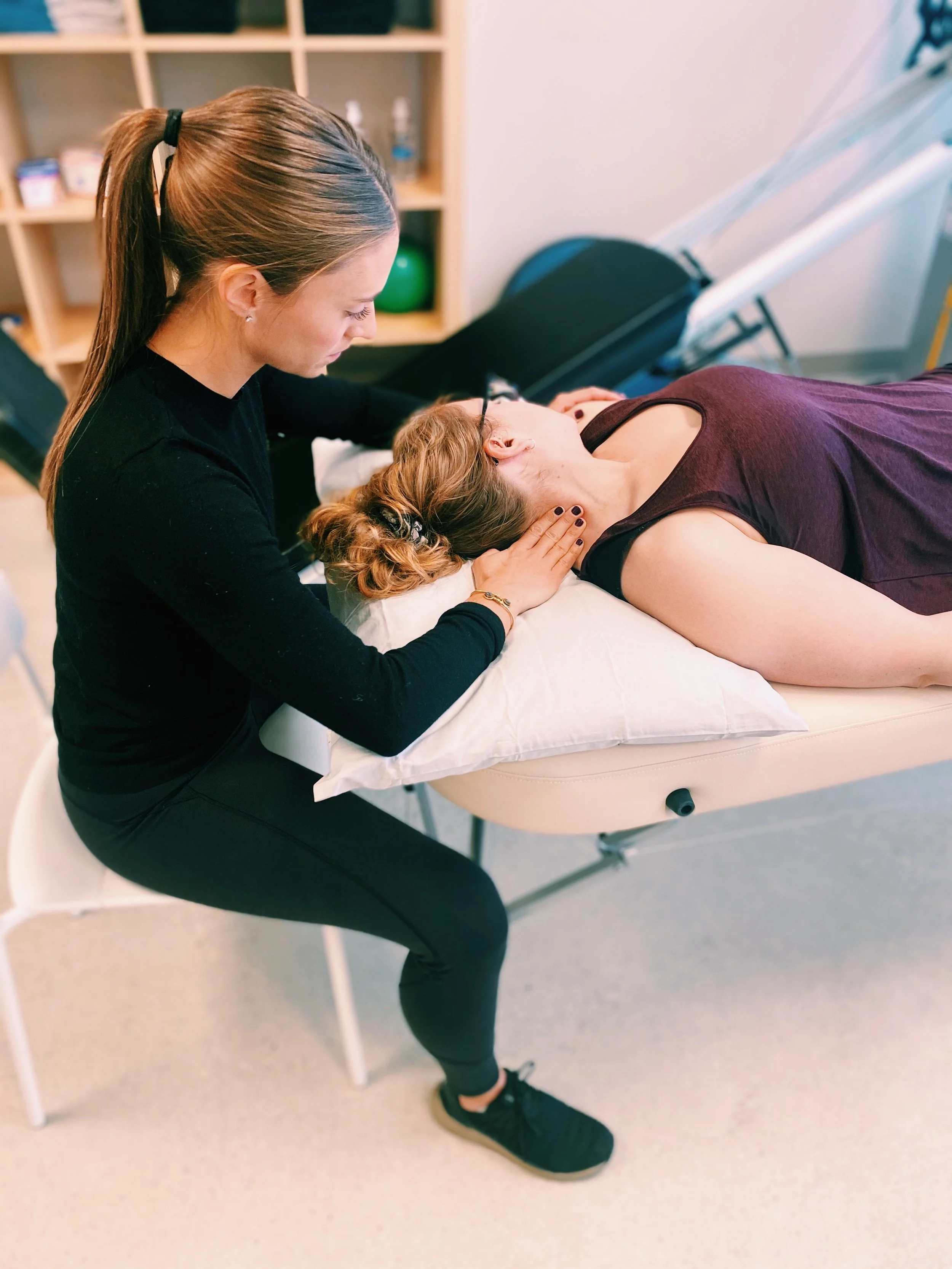Athletic Therapy
Athletic therapy sessions are the most varied in terms of who can benefit from these appointments. Some examples include:
Whether you’ve just been injured or you’ve had a nagging injury for a long time this session has got you covered. I always start with an initial assessment which includes a patient history, postural assessment, gait analysis and movement analysis. I check your range of motion and strength and follow it up with special tests to confirm the issue. The next step is educating you on the cause of your injury and how we can prevent it from happening again with a treatment plan that consists of a home exercise program and hands on treatment if needed.
If you've been going to the gym and are simply unsure if you’re doing exercises properly this can be tackled in an athletic therapy session and will help to prevent injuries from happening in the future.
If you’re a runner and you keep getting injured, this can be corrected with an athletic therapy session so that we can look at your running mechanics, test your strength and range of motion and find the weaknesses and imbalances that are causing the repetitive strain injuries and fix them!
If you work at a desk job and have chronic back or neck pain, an athletic therapy session can show you how you can fix this problem and stop it from coming back.
If you’re an athlete looking to improve your performance, an athletic therapy session can show you what you need to do to achieve your goals.
What does an Initial Assessment consist of?
Assessment: I specialize in evaluating the type and severity of injuries by conducting a thorough patient history, a postural assessment, a gait analysis and a complete musculoskeletal assessment that looks for abnormalities in your range of motion and strength to confirm the injury and to find the cause for your pain so that you can prevent it from happening again in the future.
Treatment and Rehabilitation: I’ll recommend a personalized treatment plan. This could include manual therapy techniques (massage, joint mobilization, soft tissue release, cupping, Graston technique, PNF stretching), therapeutic modalities, physical reconditioning by means of a home exercise program using specific exercises to correct your imbalances as well as supportive taping and bracing to speed healing.
Education: Patient education is a crucial cornerstone to a healthy and rapid recovery. It is important that you understand your injury, the cause, and why you’re doing the exercises prescribed so that you can have an active role and confidence in your treatment plan

